Jack Oldham, Content Marketing Manager at EngageSciences, examines the brands leveraging UCG to connect with consumers and drive sales.
At the heart of every brand campaign are its users. While brand marketers are hard at work creating slick campaign messages and assets, a brand’s potential customers also create their own content on a daily basis across Facebook, Twitter, Snapchat, Vine and Instagram. This explosion of “user-generated content” (or UGC, for short) is increasingly becoming an important component of many successful brand marketing campaigns.
According to research, more than 1.8 billion photos and 144,000 hours of video are uploaded every day around the world on social media. User-generated content is incredibly shareable, its authenticity a main driver in its popularity. In fact, 84% of Millennials say that user-generated content has an effect on what they buy.
With peer recommendations more impactful than ever, many brands are winning consumer credibility and trust by leveraging user-generated content to engage with audiences. Here are examples of five stand-out brands which have created winning strategies with user-generated content over the past year.
Using hashtags to drive content creation
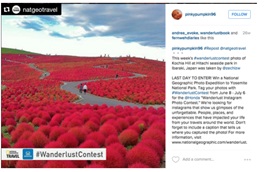
National Geographic (NatGeo) is an established media property that has for decades provided readers with compelling imagery from around the world. Inviting people around the world to share their best images, NatGeo’s “Wanderlust Instagram Photo Contest” used Instagram’s inherently visual platform to encourage people to share their own breathtaking images using the #WanderlustContest, for a chance to win a Yosemite photo expedition with a NatGeo photographer.
Wildly successful at engaging fans, the campaign resulted in an increase to NatGeo’s Instagram followers from 10.1 million followers in 2014 to over 43 million followers today.
Creating hype around a product launch
To launch its new game, “Heroes of the Storm,” global video game publisher, Blizzard Entertainment, launched a digital campaign countdown page centered around the game-relevant hashtag #NexusCalling to build user moment ahead of the game’s wider launch.
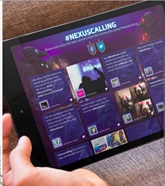
Fans were given access to live trailers, provided a behind-the-scenes look at advance game content and were encouraged to create and share their own game avatars. The digital pre-launch activities were augmented by a live launch that was well-attended due to the hands-on online buzz generated by fans ahead of time.
Making user-generated content shoppable
According to research, featuring user-generated photos at the point of purchase boosts conversion by up to seven percent. To engage parents buying shoes for their children, global shoe brand Clarks launched a campaign encouraging parents to share photos of their children’s best moments using the Instagram and Twitter hashtag #ClarksMoments, which was then aggregated on Clarks kids’ shoes microsite.
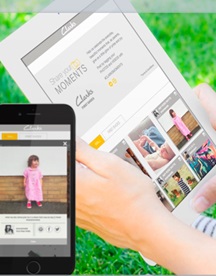
Each week, Clarks would pick a ‘Moment of the Week’ to highlight and made each user-generated image shoppable, so that parents viewing the Clarks website could see real-life examples of children wearing Clarks shoes and click through to buy based on the images shown. In this way, Clarks made it very easy for parents to shop based on authentic consumer recommendations.
Combining user-generated content with service offerings
Costa Coffee wanted to #shakeupsummer by launching a new summer ice coffee shake drink. It turned to Instagram to ask fans to upload to Instagram their best videos celebrating British summer.
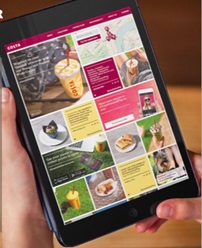
By mixing owned content with user-generated content, customer loyalty cards, its mobile app and store finder with weather reports, Costa’s campaign that was fun and engaging while driving users to its stores to sample the new iced drink in time to beat the summer heat.
Transforming in-venue experiences
Every year, millions of people visit Ripley’s Believe It Or Not museums around the world for a unique tourist experience. Ripley’s wanted to digitise the traditional in-venue experience so in August 2015, it asked its visitors to share the content from their experiences, so that it could be displayed on digital screens at venues around the world.
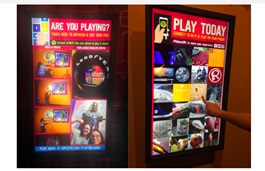
Using the interactive screens, other visitors could take short quizzes and polls in response to the user-generated content. Employing mobile as part of the UCG strategy allowed Ripley to bridge the traditional, offline Ripley’s visitor experience with a unique online experience.
What can marketers learn from these UGC-led campaigns?
In each of these examples, the UGC-led campaign resulted in increased user engagement, evidenced by an uptick in the number of followers, shares, mentions and official hashtag usages for each brand around the campaign. As with any marketing campaign, the UGC campaign results in each instance were measured against sales numbers, proving their credibility and effectiveness.
The ultimate take-away for brand marketers from each of these campaigns is that consumers trust other consumers to make purchase decisions. Making a concerted effort to get your brand in front of consumers that can then create their own content to share with their peers will result in consumers acting as your authentic brand advocates. This is a more powerful form of advocacy in today’s day and age — perhaps even more so than celebrity endorsement.
Running a UGC-centred campaign can provide audience insight that can act as a mini focus group for your brand, providing a new set of digitally relevant insights for a new era of modern, digital marketing.
By Jack Oldham
Content Marketing Manager
EngageSciences

